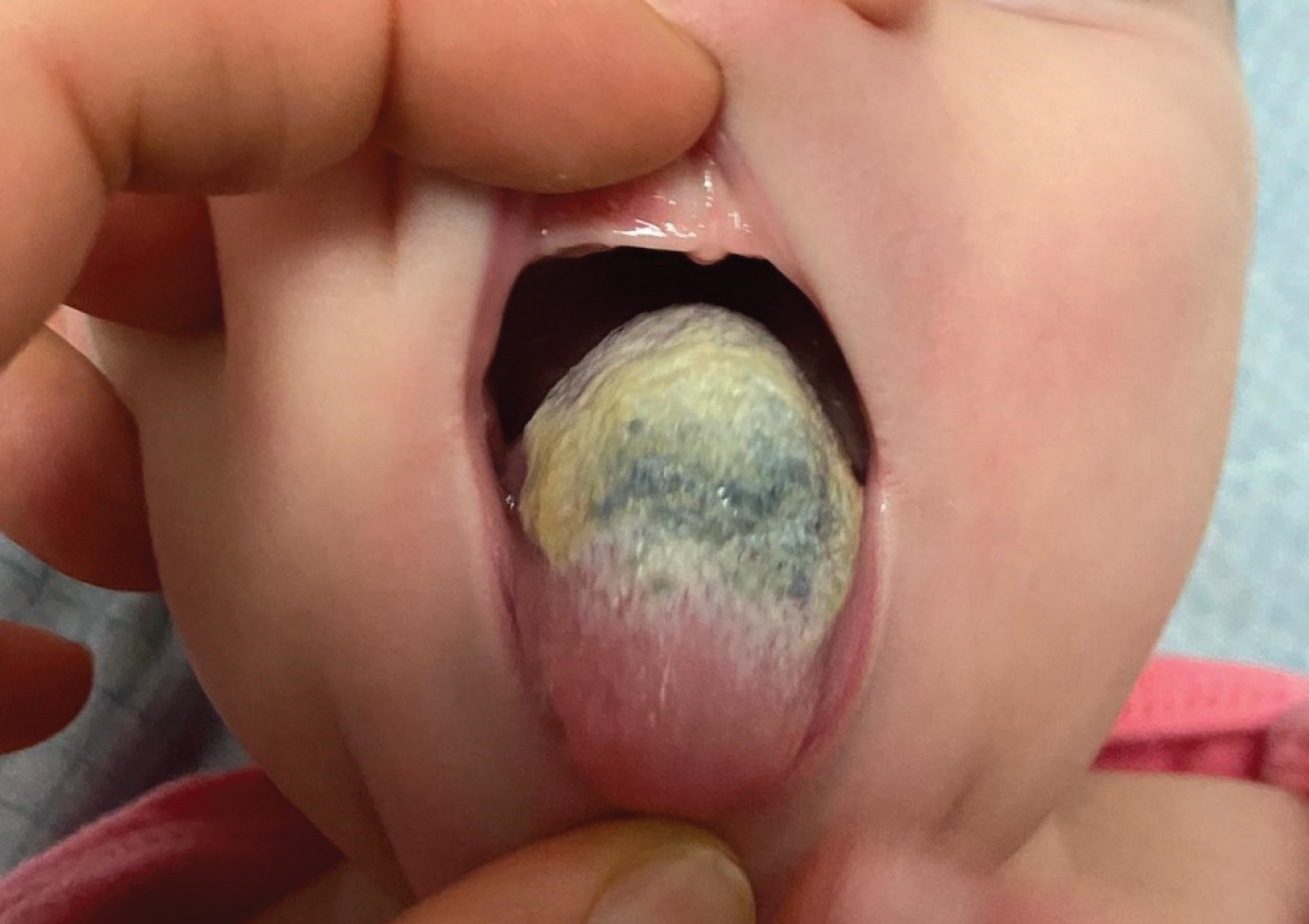A two-month-old term female presented at routine pediatric consultation with painless dark discoloration of the tongue for two weeks. Gastroesophageal reflux and colic were present from one month of age and medicated with probiotics. Weight gain was steady in the 85th percentile with exclusive breast milk feeding. She was taking cholecalciferol. No family history or risk factors were identified. She was asymptomatic and physical examination was unremarkable except for the irregular-shaped blackened hairy lesion on the posterior two-thirds of the tongue dorsum (Figure 1). No clinical response was seen after two weeks of topical antifungal treatment, excluding moniliasis. The mother was instructed to softly brush the tongue twice daily and complete regression occurred after two weeks. Lingua villosa nigra in infants is a rare, benign, painless, and self-limited condition. The dark pigment on the hypertrophied keratinized filiform lingual papilla is believed to be produced by chromogenic microorganisms. Concerned parents must be reassured [1-3].

Figure 1: Infant's black hairy tongue.